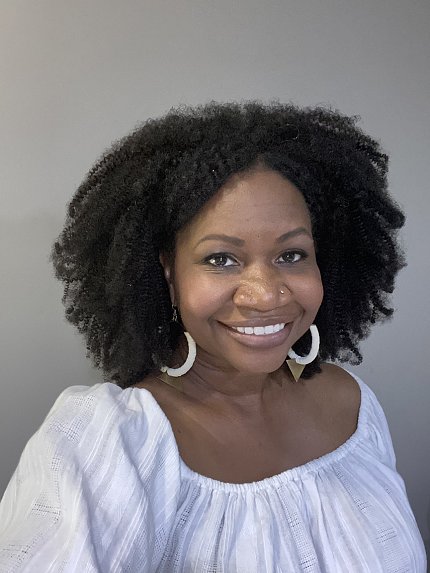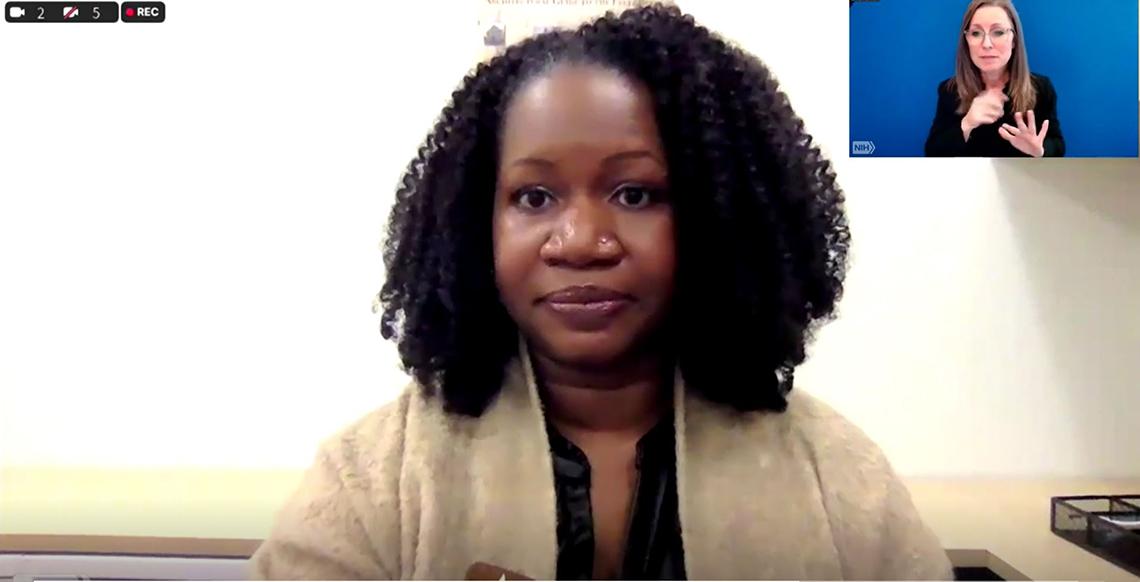Reproductive Medicine Advances Linked to Slavery

Modern reproductive medicine has its origins in slavery, said Dr. Deirdre Cooper Owens during a Feb. 10 NLM History of Medicine talk.
“Physicians in the South developed the field of obstetrics and gynecology as quickly as they did because of their access to enslaved bodies,” said Cooper Owens, the Charles and Linda Wilson professor in the history of medicine and director of the Humanities in Medicine Program at the University of Nebraska-Lincoln.
In 1807, the United States banned the importation of slaves into any port or place within the U.S. jurisdiction. As a result of this prohibition, Cooper Owens said, physicians in the antebellum South became interested in the reproductive health of enslaved women.
“The engine of slavery was dependent upon enslaved women’s ability to live through pregnancy and to birth healthy children,” she said. “The status of slavery was passed from the mother to the child.”
One of the most famous surgeons of the 19th century was the slave-owning South Carolina physician J. Marion Sims. Known after his death as the “Father of Gynecology,” Sims developed a more effective surgical technique to repair vesico-vaginal fistulas, a tear between the bladder and vagina that develops after childbirth. It causes pain and urine leakage. He conducted most of his research on enslaved woman without their consent or anesthesia.
Sims did not have to ask for permission to perform surgery. “Slave owners had no legal obligation to ask an enslaved person whether they would consent to surgery or medical treatment,” Cooper Owens explained. “Consent had to come from the owner.”
In the 1840s, most surgeons did not use anesthesia because the field wasn’t very advanced. Many didn’t know the correct dosage.
Sims’s treatment of enslaved women wasn’t exceptional for his time. Other physicians, such as Drs. Ephraim McDowell, John Peter Mettauer and Francois Marie Prevost, also pioneered surgical techniques related to women’s reproductive health by experimenting on enslaved women.
McDowell was the first person to successfully remove an ovarian tumor. Mettauer performed the first successful repair of vesico-vaginal fistula. Prevost was the second American to perform a successful Caesarean section.
“There was brutality and cruelty to go around, especially from the perspective of enslaved women who had to undergo experimental surgeries that lasted for years after being taken away from their homes, families, friends and communities,” Cooper Owens said.
Sims first conducted experiments on about half a dozen women in a slave hospital in Montgomery, Ala. His patients remain mostly unknown except for three first names: Lucy, Anarcha and Betsey.
“He had two white male surgical assistants who were learning from him,” Cooper Owens said. “After a few years of failed experiments, they quit. Sims did what any other slave owner did: He told his enslaved patients they must now work as his assistants.”
He trained the women in the same way he trained the aides who had quit. Once Sims had established a surgical team of enslaved women, he finally perfected several surgical techniques. The women were smart and dignified, “even though they lived in a world that didn’t afford them dignity,” Cooper Owens pointed out.
Initially when Sims published his findings, he was transparent and honest about the experiments and the race of his patients-turned-assistants. In subsequent articles, however, Sims’s staff and patients were depicted as white. “There was an erasure that was happening visually and historically,” Cooper Owens said.

Interest in the reproductive health of Black women ended once slaves were granted freedom. According to Cooper Owens’s research, the United States has been for a long time the most dangerous high-income country for Black women to become pregnant or have babies.
In cities across America, “Black women have higher rates of death and complications from pregnancy and childbirth. The rates of mortality and morbidity are very high,” Cooper Owens said. In Washington D.C., for example, the African-American maternal mortality rate is almost twice the national rate, despite dramatic improvements since 2014. Between 2013 and 2017, 95 percent of pregnancy-related deaths in the city were African-American, even though they make up only 44 percent of the population.
Figures in medical research history must be seen as humans, not objects of inquiry, Cooper Owens concluded. More importantly, the descendants of these figures must be thought of as “people who deserve our care and protection, so that we cannot continue on with these really harmful statistics around the Black birthing crisis.”
